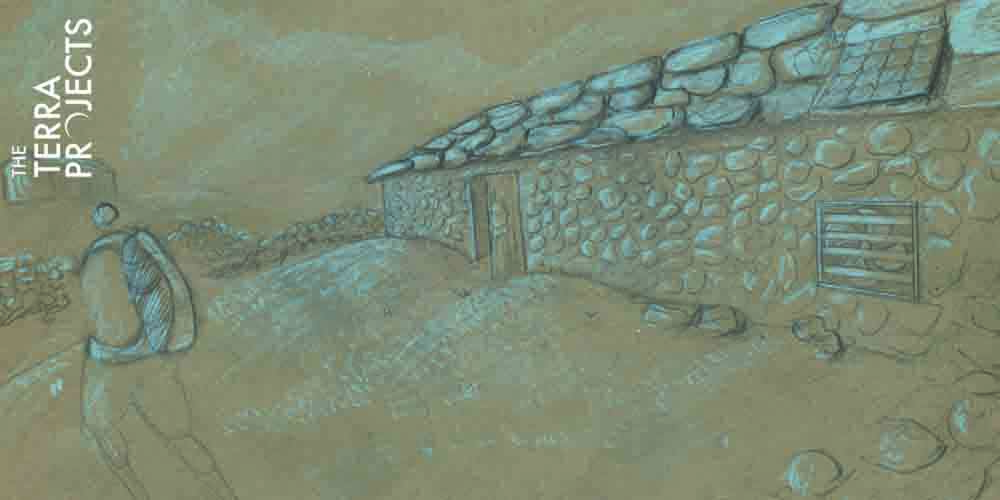Gimme Shelter: A Blueprint for Living in Extreme Environments (Op-Ed)


Stacey Severn is a science enthusiast and blogger whose writing and photos appear in StarTalk, Forbes, Bloomberg, The Huffington Post, Space.com and other platforms. She is the community manager for Neil deGrasse Tyson's StarTalk Radio, and advisor to the Space Advisory Committee at The Explorer's Club. She contributed this article to Live Science's Expert Voices: Op-Ed & Insights.
Dave Irwin, founder of Terra Projects, is an energetic, talented young architect whose designs merge with the Earth's natural environment. Irwin was part of the collective behind a nature-inspired installation, Rhizome, in New York's Brooklyn Bridge Park, and a number of endeavors pairing the artistic with the environment. His current passion crosses over from conceptual to practical; one that is humanitarian and could help solve real-world problems in polar regions, tsunami-prone regions and anywhere that water and flooding are issues. [In Images: Extreme Weather Around the World ]
The project, called Rig, is a patent-pending smart platform and the first of its kind. The rapidly deployable, temporary housing platform knows when it needs to stabilize itself due to changes in the ground below, and can also sense the presence of ground water accumulation. Rig is what Irwin calls "anticipatory infrastructure" — architecture that uses sensors and the "internet of things" as a way to provide information and responsive feedback to users based on what the environment is doing. Irwin has already presented Rig to personnel at the U.S. Antarctic Program, Lockheed Martin, the Danish Consulate of N.Y., and the Danish Technical University (D.T.U.) in northern Denmark.
I recently sat down with Irwin to discuss his career, his inspiration for Rig, Terra Projects and how architectural design can help save people in different parts of the world. The following are edited excerpts from a longer conversation.
Stacey Severn: How, as an architect, did you transition from blending with the environment to adapting to it?
Dave Irwin: One thing that interests me in whatever I take on is to have a significant problem to solve. Whether it's a speculative project that focuses heavily on a concept or a real project to be constructed, the problems are different. In one, maybe there's a budgetary constraint. In the other, perhaps you're trying to work through a dilemma that exists environmentally, morally, socially. I want something I can sink my teeth into that not only stands on its own conceptually, but that is applicable for problems in the real world. [Antarctic Architecture? (Gallery )]
S.S.: What brought your attention to the problems encountered with building stability in Arctic and flood-prone regions?
Get the world’s most fascinating discoveries delivered straight to your inbox.
D.I.: I wanted to create a project that had potential for large-scale application, so I started researching. I began to look at things going on in the world, things happening naturally. One is the way water is rising in certain coastal cities. Venice, for example, has this extreme rise in tides. And the city prepares itself for this — the water comes in and it goes out. It was compelling to me, something really interesting
In my research I discovered that the world's fastest-moving glacier, the Jakobshavn Isbræ located on the west coast of Greenland, is moving 30 meters per day. The calving front, the edge of the glacier where icebergs break off, is receding inland. I found there were scientists living there, studying this movement. I talked to the camp's lead climatologist, who explained that the ice is melting earlier each season. The melt, coupled with high winds, longer summers and a shorter amount of time for snow to accumulate on the coast, results in the camp's structure failing, and it collapses every two years.
The Rig platform provides a stable structure and allows researchers more time to conduct their studies. The work they're doing is extremely important. I look at these scientists as Doctors of the Earth, and the idea that I can help give a window of opportunity to people to do their work is part of the reason this project exists. It was in a camp just like this, in the Antarctic, that scientists discovered the hole in our ozone layer back in 1984. These research camps are vital to our understanding of our planet.
S.S.: I understand this solution would not only help places like Greenland, but other regions prone to flooding?
D.I.: Absolutely. The Rig system is able to operate on either end of the melt cycle. Rising sea levels in coastal cities and villages are directly caused by the polar melt. The United Nations comes in to set up camps for victims and refugees who have to go miles away to higher ground for a nice, clean piece of land. Rig will allow people to stay in their hometowns, rapidly deploying these platforms to provide a stable structure to build on. It allows semi-permanent architecture in a familiar context. It's a way that man and nature can begin to work together.
When I was volunteering during Hurricane Sandy in Coney Island, everything was hectic and chaotic. Communities were pulled apart because people needed shelter, and many were put in hotels and housing in other boroughs and states. Rig can offer a bit of relief during the time everything's being sorted out, allowing flood victims to maintain their sense of community. They can set up multiple units and put shelters on top of them, and be able to keep people close to one another.
S.S.: Tell me a little about this new project in Nepal, where the average life expectancy within the Sherpa community is only 48 years. People are dying because they inhale smoke from cooking and the heating of their dwellings, which don't have windows or ventilation.
D.I.: Terra Projects developed a product (Vent) that is solar-powered and minimally intrusive upon a home's structure. It can be quickly set up for a cost of under $100. Vent will pipe out the smoke, something wreaking havoc on that society for quite some time.
Our core principles are to design architecture that respects the natural environment and create a symbiotic relationship between what is natural and manmade. The projects we have on the table right now, both Rig and Vent, were designed because of problems in the world. By focusing on creating the best possible design, first and foremost, all the other pieces for implementation will fall into place.
Follow all of the Expert Voices issues and debates — and become part of the discussion — on Facebook, Twitter and Google+. The views expressed are those of the author and do not necessarily reflect the views of the publisher. This version of the article was originally published on LiveScience.




